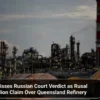Provaris Energy Ltd (ASX: PV1) has delivered a transformative first quarter for FY2026, marked by significant progress across compressed hydrogen shipping and liquid CO₂ storage initiatives. The Company’s September 2025 quarterly report reveals strategic partnerships with global industry leaders, the establishment of a state-of-the-art innovation facility in Norway, and advancing developments that position Provaris at the forefront of the clean energy transition.
This quarter marked a turning point for the company — moving from concept to concrete delivery. From advancing technical validation to forging strategic partnerships and developing critical hydrogen and CO₂ infrastructure, Provaris demonstrated real progress in transforming vision into execution.
K LINE Partnership Progresses Commercial Framework
Following the execution of a strategic Memorandum of Understanding (MOU) with Kawasaki Kisen Kaisha, Ltd. (K LINE) in June 2025, Provaris completed technical due diligence workshops in Tokyo during the quarter. The collaboration focuses on advancing the commercialisation of Provaris’ proprietary H2Neo™ carriers and H2Leo™ barges for compressed hydrogen shipping and offshore storage.

Figure 1: Kawasaki Kisen Kaisha, Ltd. (K LINE)
The partnership represents a significant validation of Provaris’ technology by one of the world’s leading ship-owners. K LINE operates a diverse fleet and brings extensive maritime expertise to the development of a time-charter model for European hydrogen supply projects.
Joint management meetings held with key stakeholders, including Uniper, during Gastech 2025 in Milan further deepened strategic relationships. Follow-up technical and commercial meetings are scheduled in Norway for the December 2025 quarter to progress ship-owner requirements and charter structure alignment for proposed export projects.
Norwegian Innovation Centre Becomes Operational
A major operational milestone was reached with the establishment of Provaris’ Innovation Centre in Fiskå, on Norway’s West Coast. The facility houses a fully automated robotic cell dedicated to laser welding and fabrication of prototype tanks for compressed hydrogen and future liquid CO₂ applications.
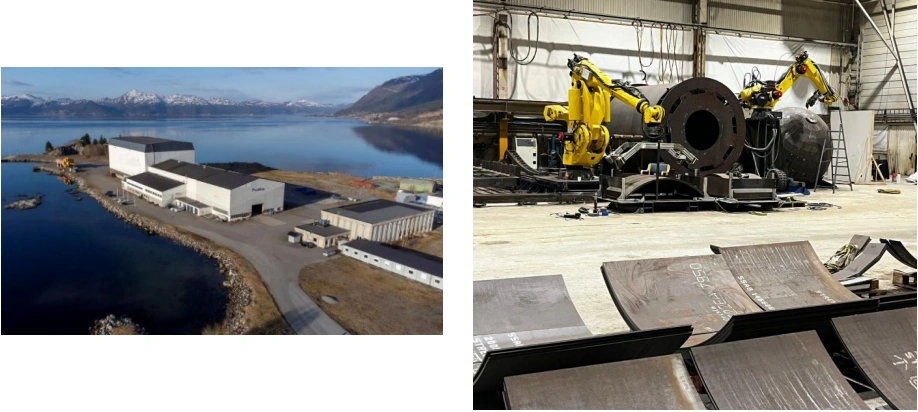
The investment in robotic cell equipment represents a strategic asset for Provaris, providing core manufacturing capability to develop and commercialise its proprietary tank designs. The facility features robotic arms, controllers, scalable jigs, and laser welding equipment specifically configured for the Company’s innovative layered plate fabrication methodology.
Commissioning of the robotic cell is now complete, with fabrication of the hydrogen prototype tank scheduled to commence in the current quarter. Testing is targeted for Q1 2026, supporting final Class approvals for the H2Neo™ carrier. Site visits from key stakeholders, including a team from K LINE, are scheduled over the next two quarters to observe fabrication and testing activities.
The facility’s establishment reflects Provaris’ capital-light development model, allowing the Company to demonstrate manufacturing processes and validate design specifications ahead of commercial-scale production partnerships.
Baker Hughes Collaboration Strengthens Technical Offering
During the quarter, Provaris announced a Strategic Collaboration Agreement with Baker Hughes, a major global energy technology company. The collaboration combines Baker Hughes’ compression expertise with Provaris’ proprietary carrier designs to jointly support compressed hydrogen solutions for marine transport and storage.
The partnership establishes a framework for advancing hydrogen export and import projects across Europe, with initial focus on opportunities identified in the Nordic region. Co-operation activities commenced during the quarter to define equipment and engineering scopes, with stakeholder meetings held during Gastech 2025, reinforcing the commercial potential of the collaboration.
Baker Hughes’ involvement provides significant validation of Provaris’ technology and enhances the Company’s ability to deliver integrated compressed hydrogen solutions combining transportation, storage, and compression systems.

Figure 3: Baker Hughes
European Hydrogen Supply Chain Developments
Provaris continued engagement with Norwegian hydrogen project developers during Q1 2026, including Norwegian Hydrogen, with both awaiting final grid power capacity allocation from the federal regulator (Statnett) to advance project studies, shipping and offtake discussions.
Discussions also progressed with German and Northern European partners to define import requirements for future hydrogen supply utilising Provaris’ H2Neo™ carriers. Analysis indicates compressed hydrogen export using Provaris carriers could enable earlier project start-up compared to ammonia-based approaches, avoid energy-intensive cracking processes, and provide a simpler, more cost-effective solution aligned to existing pipeline infrastructure.
Tepsa, a leading independent operator of bulk liquid storage terminals, announced during the quarter its acquisition of the GES 24-hectare terminal in the Europort area of the Port of Rotterdam. Provaris and Tepsa are now reviewing their completed Concept Design Study for an initial 40,000 tonnes per annum compressed hydrogen import project proposed for the site.
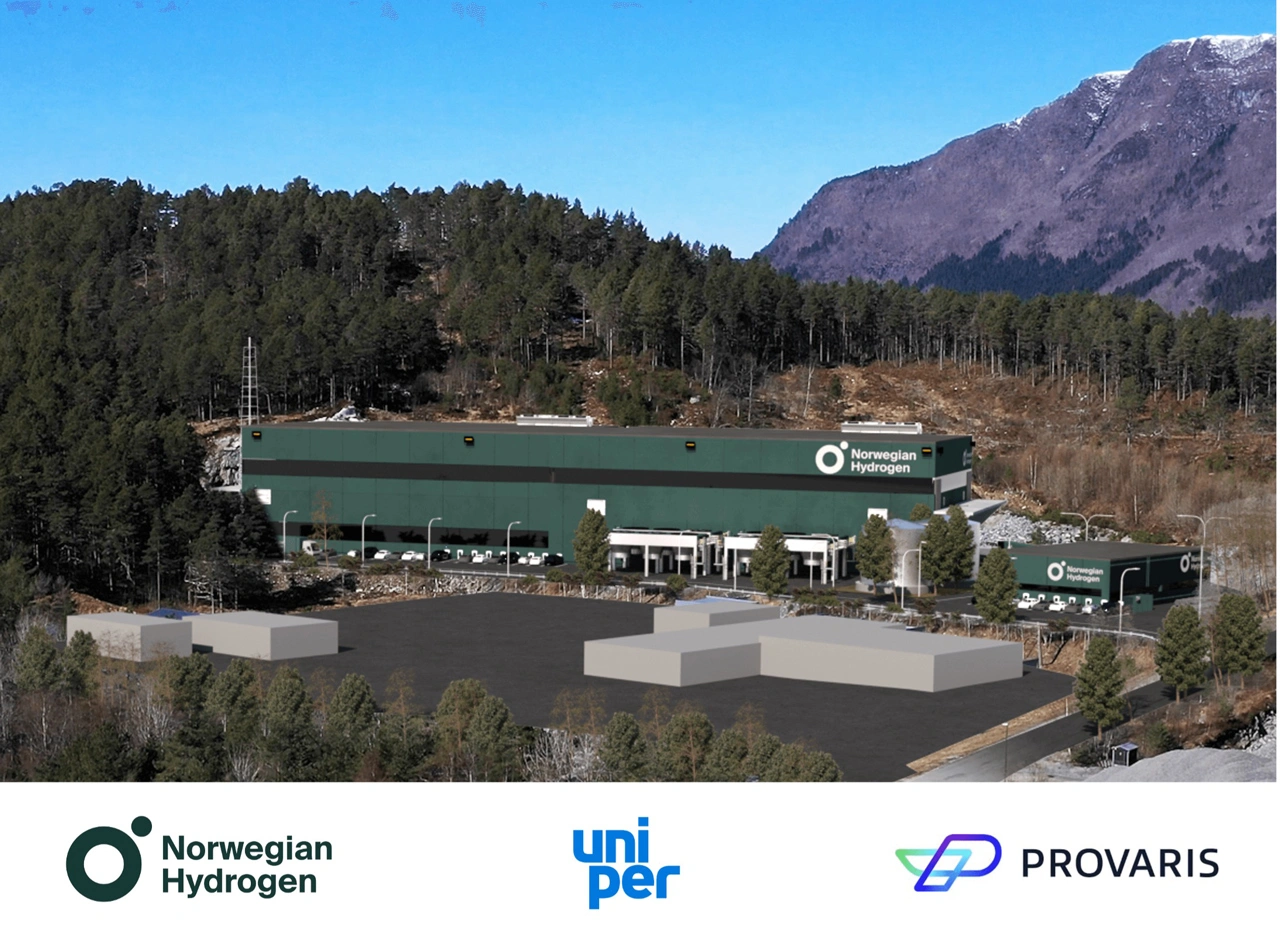
Figure 4: Provaris Energy, Norwegian Hydrogen and Uniper
The acquired terminal offers approximately 600 metres of direct waterfront access along the Caland Channel, suitable for unloading of Provaris’ H2Neo™ carriers, along with connectivity to existing rail and pipeline networks.
CO₂ Tank Development Advances with Yinson
A significant development in Provaris’ CO₂ technology came with Yinson Production AS approving commencement of a fully funded Front-End Engineering Design (FEED) stage for the proposed 25,000 cubic metre low-pressure liquid CO₂ tank. The tank is designed for integration with Yinson’s planned 100,000 cubic metre offshore Floating Storage Injection Unit (FSIU) to operate at their Havstjerne CCS Project under development in Norway.
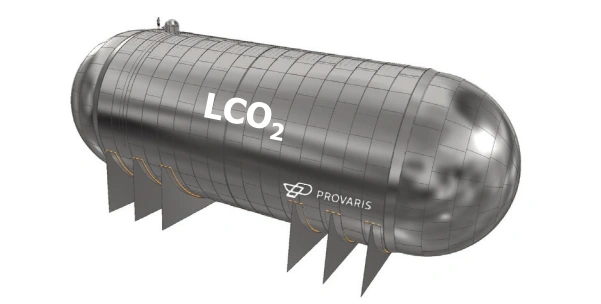
Figure 5: Illustration of Provaris’ 25,000 bcm LCO2 Low-Pressure Tank designed for Yinson’s 100,000 bcm FSIU
Preliminary FEED design deliverables are due in December 2025, with final completion targeted for mid-2026. The FEED phase scope includes structural and parametric analysis, static and fatigue structural design modelling, development of experimental test procedures, and ongoing engagement with classification societies for General Approval for Ship Application (GASA).
Yinson’s funding commitment demonstrates strong strategic alignment and enables Provaris to accelerate development without increasing operational cash burn while retaining 50% ownership of the resulting intellectual property through a planned Joint Venture.
Work also commenced on the implementation of a Norwegian Joint Venture Company (JV Co) to hold exclusive rights to all liquid CO₂ tank designs, fabrication methodology, and future licence revenues. Operating as a Norwegian entity will provide access to Norwegian and European state aid funding schemes.
LCO₂ Carrier Designs Target Growing Market
Provaris developed preliminary concept designs for liquid CO₂ carriers during the quarter across multiple operating pressures and capacities, including low-pressure, medium-pressure, and elevated-pressure configurations. Market soundings with shipowners in workshops across Asia and Europe identified new commercial opportunities for carriers with storage capacity exceeding 20,000 cubic metres.
Feedback from owners highlighted a potential market opportunity to provide lower-cost, higher-capacity carrier solutions compared to existing designs. The development aligns with industry forecasts, indicating significant demand for new LCO₂ carriers required to support Europe’s carbon capture and storage ambitions.
During the quarter, Provaris joined Yinson at a well-attended CO₂ industry event in Milan before Gastech 2025, where Yinson presented an outline of its FSIU project, including the Provaris LCO₂ tank design.
DNV analysis presented at the event indicated the European regional market requires new LCO₂ carriers to transport an expected 50+ million tonnes per annum of captured CO₂, translating to requirements for dozens of new carriers across pressure and storage capacity ranges. This outlook reinforces the strategic timing of Provaris’ LCO₂ technology development.
Industry Context: Hydrogen and CO₂ Transport Markets Accelerate
The global compressed hydrogen energy storage market reached USD 15.9 billion in 2023 and is projected to grow at a compound annual growth rate of 4.5% through 2030, driven by increasing demand for clean and sustainable energy solutions. The hydrogen ships market is experiencing even more dramatic growth, expected to expand from USD 1700 million in 2024 to USD 12 billion by 2035, representing a CAGR of 19.4%.

Figure 6: Hydrogen Energy Storage Market
In the carbon capture, utilisation, and storage sector, the global CCUS market is projected to reach USD 17.75 billion by 2030 from USD 5.82 billion in 2025, at a CAGR of 25.0%. Europe is positioned as a key market, with the Northern Lights project in Norway representing the world’s first cross-border CO₂ transport and storage facility, now preparing for its third expansion due to higher-than-anticipated demand.
Provaris’ dual focus on compressed hydrogen shipping and liquid CO₂ transport positions the Company to address two of the most significant infrastructure challenges in the global energy transition.

Financial Position and Corporate Activity
As of 30th September 2025, the Company held AUD 925,000 in cash with no corporate debt. AUD 3.0 million convertible bond facility remains available as standby financing, with AUD 2.5 million undrawn.
Net cash used in operating activities during the quarter was AUD 1.186 million, elevated primarily due to timing factors including pre-payment of annualised insurance and audit costs, investment in robotic cell equipment, and delayed receipt of LCO₂ Tank project income, which was collected post-period end in October.
The Company maintains a disciplined capital management approach, with the LCO₂ Tank Project remaining fully funded by Yinson through the FEED stage. Provaris continues to evaluate additional strategic funding alternatives that align with its capital-light development model.
Payments to related parties during the quarter totalled AUD 150,000, comprising fees, salaries and superannuation paid to three Non-executive Directors and one Executive Director.
Investor Outlook
As of 31st October 2025, Provaris Energy shares traded at AUD 0.016 per share. The Company’s market capitalisation stood at AUD 13.68 million, with a 52-week trading range of AUD 0.008 – AUD 0.027.
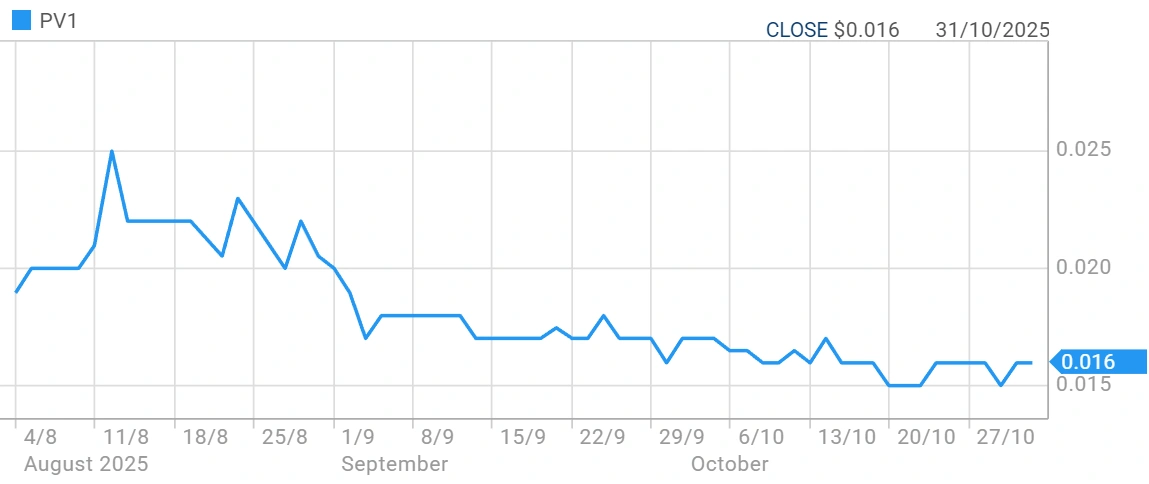 Figure 8: Provaris Energy Stock Performance Chart
Figure 8: Provaris Energy Stock Performance Chart
The September 2025 quarter marked a pivotal transition for Provaris from concept development to implementation and validation. The establishment of the Norwegian Innovation Centre, advancement of strategic partnerships with K LINE and Baker Hughes, and progression of the Yinson LCO₂ tank development through to the FEED stage represent tangible steps toward commercialisation.
Provaris’ compressed hydrogen carriers are increasingly recognised as a simpler, cost-effective alternative to ammonia-based hydrogen export solutions. The Company’s positioning in both hydrogen and CO₂ markets provides diversified exposure to two critical components of the global energy transition.
With key prototype fabrication recommencing, strategic partnerships deepening, and strong industry tailwinds supporting both hydrogen shipping and CO₂ transport infrastructure development, Provaris is advancing toward its goal of becoming a leading provider of maritime gas storage and transport solutions.








